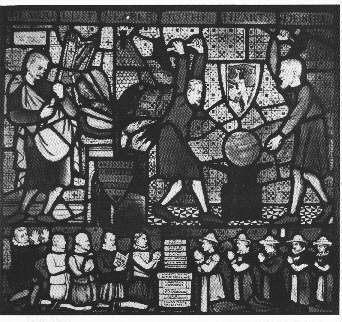| School | Troops | Resources |
The Fabian Socialists

[Note: Part of the HET Website. This page is not related to or endorsed by the Fabian Society, the Labour Party or any other organization. See the official Fabian Society website]
The British counterpart of the German Marxian revisionists and heavily influenced by the English Historical school, the upper-middle-class intellectual group - the "Fabian Society" - emerged in 1884 as a strand of latter-day utopian socialism. They became known to the public firstly through Sidney Webb's Facts for Socialists (1884) and then through the famous Fabian Essays in Socialism (1889) written by the Fabian "inner circle".
The "Fabians" were named after Fabius, the famous Roman general which opposed Hannibal as they were "biding their time" until they would "strike hard". Exactly when this strike would occur was a perennial question. Eschewing the revolutionary tactics of more orthodox Marxians, the middle-class Fabians were more directly involved with politics and practical gains - through contacts not only in the "International Labor Party", trade unions and cooperative movements but also throughout the entire British political apparatus (Liberals and Tories included).
At the core of the Fabian Society were the Webbs - Sidney J. Webb and his wife, Beatrice Potter Webb (married 1892). Together, they wrote numerous studies of industrial Britain, alternative economic arrangements (esp. cooperatives) and pamphlets for political reform. At the core of their system was the Ricardian theory of rent which they applied to capital as well as land (and labor as well - their opposition to high labor incomes was also an issue). Their conclusion was that it was the state's responsibility to acquire this rent (a position strikingly familiar to Henry George. Their later admiration of Soviet Russia stemmed partly from Stalin's "efficiency" at acquiring this rent. The playwright George Bernard Shaw and the political scientist Graham Wallas were the other members of the early Fabian "inner circle".
As one contemporary noted, the Fabians "combined an ounce of theory with a ton of practice". The practice, for the Fabians, was to influence public opinion in the direction of socialism. This was to be accomplished, they argued, not through mass organization but rather by the selective education of the powerful "few" who would lead the reforms in government (hopefully themselves), thus they only belatedly extended their appeal beyond the narrow intelligentsia class from which they arose. It was the Webbs who founded the London School of Economics (L.S.E.) in 1895.
Through the relentless outpouring of Fabian Essays and the charismatic appeal of the Webbs - coupled with the prowess of literary figures such as George Bernard Shaw and H.G. Wells - ensured that they would be indeed influential among British intellectuals and government officials. Alfred Marshall, for one, readily admitted his sympathies for the Fabian cause (although he abhorred their anti-theoretical stance). Philip Wicksteed - who tangled with Shaw over the labor theory of value and marginal utility theory - was considerably more critical.
It was this narrowness of appeal that led some Fabians, such as G.D.H. Cole and novelist H.G. Wells to break with the Fabians. Cole went on to establish the "Guild Socialists" who relied more on state-chartered but nonetheless self-governing producer organizations of workers - "guilds" - than on the intellectual-government machine the Fabians preferred. In this sense, the "Guild Socialists" were closer to the French syndicalism of Sorel - albeit a bit more muted.
Further splits in the Fabian camp emerged when the Webbs and Shaw decided to throw their weight behind the British Imperial enterprise - supporting the Boer War and other colonial misadventures - as they felt their reforms (when they came about) would thus have a wider application. An overarching British Empire, they believed, would be a more efficient conductor of reform than a multitude of smaller countries. The Webb's support of monopolies was also well-known -- particularly, in their famous 1897 claim that "higgling in the market" (i.e. competition) was inimical because competitive prices always bore down on the workers. Thus, monopolies are more desirable as they would have more room to treat their workers better.
The Fabians finally disintegrated in the 1930s for a variety of reasons. Firstly, the Webbs' unqualified admiration of Soviet Russia seemed distasteful to too many in their group. Secondly, the ascendancy of the British Labour Party on the back of trade union activism had rendered the Fabians superfluous. This body of working class activists did not trust the paternalistic and nationalistic Fabians (esp. after the Education Act of 1902, essayed by Sidney Webb and against which almost all of the Labour Party was mobilized). However, Arthur Henderson, Labour Party leader from 1914 to 1922 was himself a Fabian and it was Sidney Webb who authored the famous Clause Four of the Labour Party charter committing it to a Socialist basis. Thirdly, they lost control of the L.S.E. when Cannan and then, more vigorously, Robbins turned it on a decidedly Jevonian track. Fourthly, their intellectual influence during the 1930s was overshadowed by that of Keynes. Finally, many of the reforms they had advocated had actually been undertaken during and after the Great Depression, thus rendering their work, in a sense, "complete". Of particular importance was the establishment of a comprehensive welfare state in Britain in the 1940s following the famous 1942 "Beveridge Report".
|
The Fabians
|
| HET |
|
Resources
|
All rights reserved, Gonšalo L. Fonseca
